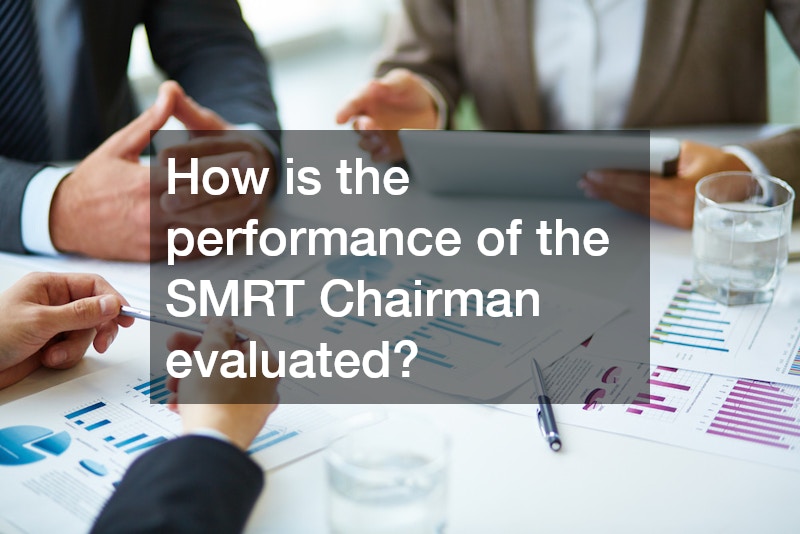The SMRT Chairman stands at the helm of one of the critical roles in any business organization, playing a vital part in steering the company towards its strategic goals. Their leadership influences not only the internal decision-making processes but also how a company interfaces with the broader market and regulatory landscape.
In exploring this role, it is essential to delve into what makes the position so pivotal, the responsibilities involved, and the dynamic interplay between the Chairman and other governance entities. Understanding these elements provides clarity on why the position commands significant attention in corporate governance discussions.
What are the primary responsibilities of the SMRT Chairman?
Defining the Scope of Leadership
The leadership responsibilities of the SMRT Chairman are expansive, encapsulating strategic oversight and visionary guidance. They are tasked with steering the company’s leadership ethos and ensuring alignment with broader organizational goals.
The SMRT Chairman is expected to offer direction and maintain focus on long-term objectives, which requires a robust understanding of both internal and external business environments. This role emphasizes establishing a leadership tone that resonates with and engages the company’s overarching mission.
Effective leadership from the Chairman sets the stage for sustainable growth, encouraging a culture of performance and accountability. The leadership scope is therefore not just about decision-making, but about cultivating a thriving company culture.
Key Decision-Making Processes
At the heart of the SMRT Chairman’s role are the decision-making processes that shape the company’s strategic trajectory. These processes involve collaborative efforts with senior executives to craft strategies that support long-term success.
The Chairman plays a pivotal role in critical decision-making forums, where strategic priorities are discussed and determined. Decisions made at this level have far-reaching implications, influencing how the company positions itself against competitors and navigates market complexities.
Through meticulous planning and deliberation, the Chairman ensures decisions align with the company’s core values and goals. It is this strategic foresight that contributes to the organization’s ability to adapt and thrive in diverse economic climates.
How does the SMRT Chairman impact corporate governance?
Role in Shaping Corporate Policies
The SMRT Chairman significantly influences corporate policies, championing frameworks that foster ethical governance and corporate responsibility. As the individual responsible for setting the governance tone, the Chairman’s influence extends to the creation and enforcement of ethics policies.
Shaping corporate policies involves aligning them with both national and international standards, ensuring the business operates within the bounds of regulatory compliance. This responsibility extends beyond mere oversight; it involves proactive development and adjustment of policies in response to changing business landscapes.
The Chairman’s leadership in policy development is crucial for maintaining public trust and investor confidence. By steering corporate governance practices, the Chairman ensures the organization’s sustained reputation and operational integrity.
Implementing Best Practices
The commitment to governance best practices is a core responsibility of the SMRT Chairman, driving initiatives that uphold transparency, fairness, and accountability across the board. The Chairman champions the integration of best practices as industry standards evolve.
Implementing best practices involves fostering an environment where compliance is part of the organizational culture rather than a mere obligation. By doing so, the Chairman enhances the organization’s resilience against scandals and operational legalities.
Furthermore, the Chairman’s role in promoting best practices ensures not only regulatory compliance but also ethical business conduct, crucial for sustaining competitive advantage. This role involves continuous evaluation and adaptation of best practices in response to the industry’s best benchmarks.
What is the relationship between the SMRT Chairman and the Board of Directors?
Collaborative Dialogue and Strategy
Collaboration between the SMRT Chairman and the Board of Directors is instrumental in shaping and executing strategic initiatives. Regular dialogue ensures the Board and Chairman align on the company’s direction and adapt strategies accordingly.
In a dynamic business environment, this relationship is characterized by robust communication channels and shared strategic vision, facilitating agile and informed decision-making. The effectiveness of strategic execution hinges on this collaborative synergy.
Additionally, the sharing of insights and perspectives between these entities supports more comprehensive risk management and strategic foresight. This collaborative approach is essential for navigating complex business challenges and seizing growth opportunities.
Balancing Power and Influence
The balance of power and influence between the Chairman and the Board is pivotal in preserving the integrity of governance structures. Neither side must wield disproportionate control, which could undermine effective governance.
This balance is maintained through a system of checks and balances, which ensures that critical decisions reflect collective input from the Chairman and Board members. By fostering this equilibrium, the organization ensures decisions benefit from diverse viewpoints and expertise.
Moreover, this power balance is essential in risk mitigation, ensuring that no single entity dominates decision-making processes unduly. The dynamic remains adaptable, adjusting as necessary in light of changes in the company’s strategic direction or external environment.
How is the performance of the SMRT Chairman evaluated?
Setting Performance Metrics
Proper evaluation of the SMRT Chairman’s performance is conducted through a set of clearly defined metrics that align with the organization’s objectives. These metrics offer a framework for assessing the Chairman’s contribution to achieving strategic goals.
Performance metrics typically encompass both financial and non-financial indicators, including leadership effectiveness and innovation drive. This ensures a holistic evaluation of the Chairman’s impact on the company’s performance.
Review and Feedback Mechanisms
Feedback and review mechanisms are integral to maintaining accountability and fostering development within the SMRT Chairman role. These systems provide structured pathways for performance evaluation and constructive critique.
Regular review sessions between the Chairman and key stakeholders allow for reflection on past achievements and challenges, facilitating a culture of continuous improvement. These interactions are crucial for identifying areas of strength as well as opportunities for growth in leadership practices.


